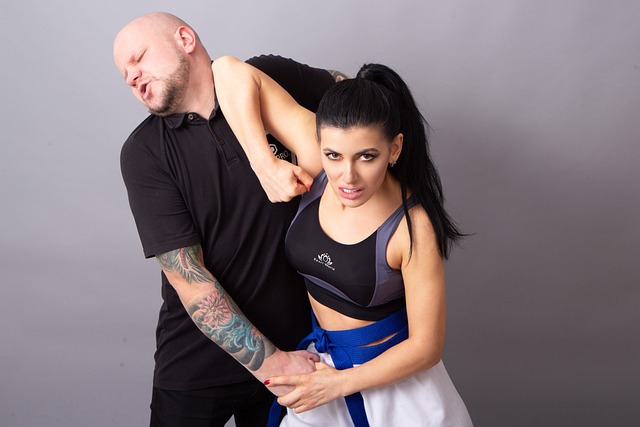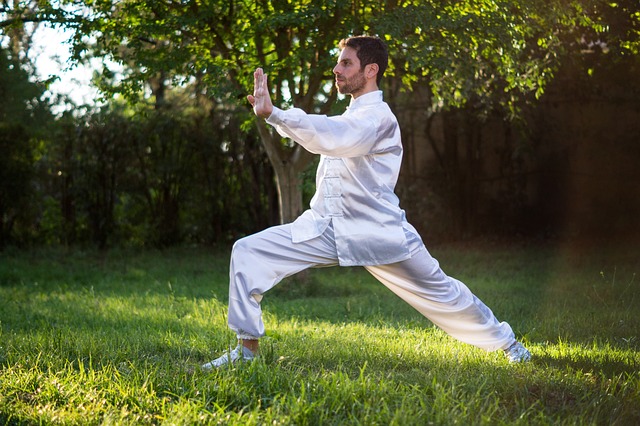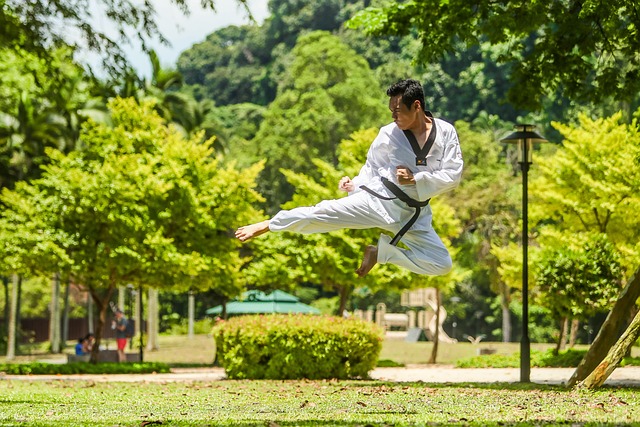Martial arts training includes the development of both physical and mental talents via the study of diverse fighting tactics. Every martial art type and style has a unique training schedule.
Martial arts training usually consists of techniques such as striking, grappling, and joint locks along with exercises, forms, and sparring. Conditioning activities such as jogging, leaping, and weight training are often used to improve general fitness and endurance.

Martial arts also emphasize mental and emotional development, which includes cultivating self-control, discipline, and respect. Many martial arts schools also teach mindfulness and meditation practices in order to train the mind in addition to the body.
Martial arts training may be gratifying for those who are interested in self-defense, physical health, or personal growth. It is important to choose a reliable training facility or teacher, and to approach the process with an open mind.
There are many different elements to martial arts training, including unique styles, beliefs, and benefits. Some other things to consider are as follows:
Martial arts training helps kids become more focused, disciplined, physically strong, resilient to bullying, and capable of self-defense. Cross-Training: Practitioners may train in a range of techniques to acquire all-encompassing abilities. Philosophy and Spirituality: To improve practitioners’ levels of inner awareness and understanding of the world, several approaches use mindfulness, meditation, and other practices. Weapons Training: Some styles include weapons training, including sword or stick fighting, to help students develop an awareness of concentration, coordination, and cultural significance. Health Benefits: Martial arts training may improve mood, reduce stress, and increase self-confidence in addition to its physical benefits.
Among the well-known martial arts are:
Japanese martial art karate places a strong emphasis on striking methods.
Taekwondo is a Korean martial art that emphasizes quick, strong punches and high kicks.
Japanese martial art judo places a strong emphasis on throwing and grappling techniques.
Brazilian Jiu-Jitsu is a grappling and submission art form that originated in Brazil.
Muay Thai is a Thai martial art that primarily focuses on elbow, knee, and striking techniques.
Chinese martial style known as “kung fu” that uses a variety of techniques.
Aikido is a Japanese martial technique that focuses only on leveraging the power of an opponent against oneself.
Boxing: A fighting sport where footwork and punching are key components.
Krav Maga: An Israeli self-defense method that prioritizes useful tactics for everyday circumstances.
Other well-liked forms include Shotoken Karate, Hapkido, Wing Chun, and Capoeira. Finding a teacher and style that complements your objectives and interests is crucial, especially with so many possibilities available.
The martial arts’ past
Martial arts have a long and complex history; throughout thousands of years, in many different countries and regions, many styles and techniques have developed. The exact origins of martial arts remain unclear, however evidence of hand-to-hand combat and martial arts training may be found in ancient Egypt, China, India, and Greece, among other civilizations.

A BC Chinese boxing, or kung fu, is one of the first known martial arts, having been practiced since 3000 BC. In ancient China, martial arts were practiced for self-defense, hunting, and military preparation. Over time, Kung Fu evolved into an intricate system of movements, positions, and concepts.
Martial arts developed in Japan among the samurai warrior class, who were trained in a variety of fighting techniques for both self defense and warfare. One of the most well-known and exciting Japanese martial arts is karate, which originated in Okinawa in the 19th century and contains elements of Chinese martial arts.
The unique martial art of taekwondo, which has its roots in Korea, emphasizes powerful punches and high kicks. Since its inclusion in the Olympic program in 2000, taekwondo has become more and more well-known worldwide.
Other martial arts, such as Silat in Indonesia and Malaysia and Muay Thai in Thailand, have gained popularity across Southeast Asia. These fighting styles, which use a variety of grappling techniques, are now popular combat sports across the world.
Martial arts gained popularity in the West throughout the 20th century, particularly when Bruce Lee became well-known and combined elements of many other martial arts to create the hybrid style Jeet Kune Do. Martial arts are expanding, evolving, and adding new forms and techniques to their repertoires these days.
most renowned nations for martial arts
Numerous countries are renowned for their legacy in martial arts. Among the most well-known are these:
China: Martial arts have a long history there, and styles like Wing Chun, Tai Chi, and Kung Fu are becoming more well-known elsewhere.
Martial arts are popular in Japan, and the most well-known include Karate, Judo, and Aikido.
Korea: Taekwondo, one of the most well-known martial arts worldwide, originated in Korea and is known for its emphasis on powerful, quick strikes and high kicks.
Muay Thai, or Thai Boxing, is a popular martial art in Thailand that is well-known for its striking techniques, which include the use of fists, elbows, knees, and shis.
Brazil: Brazilian Jiu-Jitsu was developed there and is now practiced all over the world. It concentrates on ground fighting and submission techniques.
India: India has a long history of martial arts, and one of its most well-known styles is Kalaripayattu, which is praised worldwide for its emphasis on flexibility, balance, and synchronicity.
The martial art known as Pencak Silat originated in Indonesia and Malaysia. It is growing more and more popular all over the globe and is highly renowned for its close-quarters combat techniques.
There are other countries with notable martial arts histories, including the Philippines, Russia, Iran, and Thailand.
Many well-known martial arts have various national origins. A few of them consist of:
- Thailand’s Muay Thai
- Brazilian Jiu-Jitsu originated there
- Boxing from Great Britain
- Russian Krav Maga
- Korea’s Taekwondo school
- From Japan, judo
- Chinese Wing Chun
- Brazilian Capoeira
- Korean hapkido
- Japanese karate
- Japan’s Kendo
- European fencing, particularly those of France and Italy
- Escrima, a Filipino national
- Chinese Tai Chi
Systema (Russian)
Every martial art has a distinct philosophy, technique, and history. All of them have added to the varied terrain of martial arts, even if some have become more well-known than others.
Martial arts practitioners may experience a range of psychological, emotional, and physical side effects.
Here are a few typical outcomes:
Physical fitness: Martial arts training and conditioning may help people become more fit overall, stronger, and more flexible in their cardiovascular systems.
Self-defense: The primary emphasis of martial arts is on self-defense methods that provide people the ability to defend oneself in perilous circumstances.
Stress relief: People may better control their stress and anxiety levels by practicing martial arts, which requires discipline and attention.
Self-assurance: As students advance in their martial arts training, they could become more certain and feel more in control.
attention and discipline: Learning martial arts requires devotion, attention, and discipline, all of which may be applied to other facets of life, like job or school.
Socialization: Taking martial arts lessons may provide chances for interacting with other practitioners and fostering a sense of community.
Cultural appreciation: Due to the strong cultural origins of many martial arts, practitioners may develop a greater respect and comprehension of the traditions and history surrounding the discipline they are practicing.
In general, each person’s experience with martial arts may vary depending on their objectives and degree of participation. Martial arts may, nevertheless, have favorable psychological, emotional, and physical effects that can improve a person’s general wellbeing.
varieties of karate
The phrase “martial arts” encompasses a wide range of specializations, each with its own techniques, tenets, and cultural roots. The following are some of the most well-known martial arts forms:
Okinawa is the birthplace of karate, a Japanese martial art that emphasizes punches, kicks, and blocks.
Taekwondo, the renowned Korean martial art, has a strong emphasis on jumping, spinning, and high kicks.
Japanese martial art judo has a strong emphasis on throws, takedowns, and grappling maneuvers to subdue opponents.

A ground-based martial art, Brazilian Jiu-Jitsu uses joint locks, grappling, and submission techniques to neutralize opponents.
Muay Thai is a kind of Thai combat that emphasizes grabbing, throwing, and using the fists, elbows, knees, and shins.
The Chinese martial art known as Kung Fu is made up of several styles and techniques, some of which include Wing Chun, Tai Chi, and Shaolin Kung Fu.
Israeli martial art Krav Maga emphasizes practical self-defense techniques. Professionals in the military and law enforcement often use it.
The Japanese martial art of aikido emphasizes using your opponent’s momentum and energy to your benefit.
Brazilian martial art capoeira combines dance, music, acrobatics, and martial arts concepts.
Korean martial arts known as hapkido combine punches, throws, and joint locks with an emphasis on circular movements and non-resistance.
Some notable martial arts include fencing from Europe, Silat from Southeast Asia, and Systema from Russia. Each of these martial arts has unique characteristics, a unique history, and a unique cultural significance. Read more